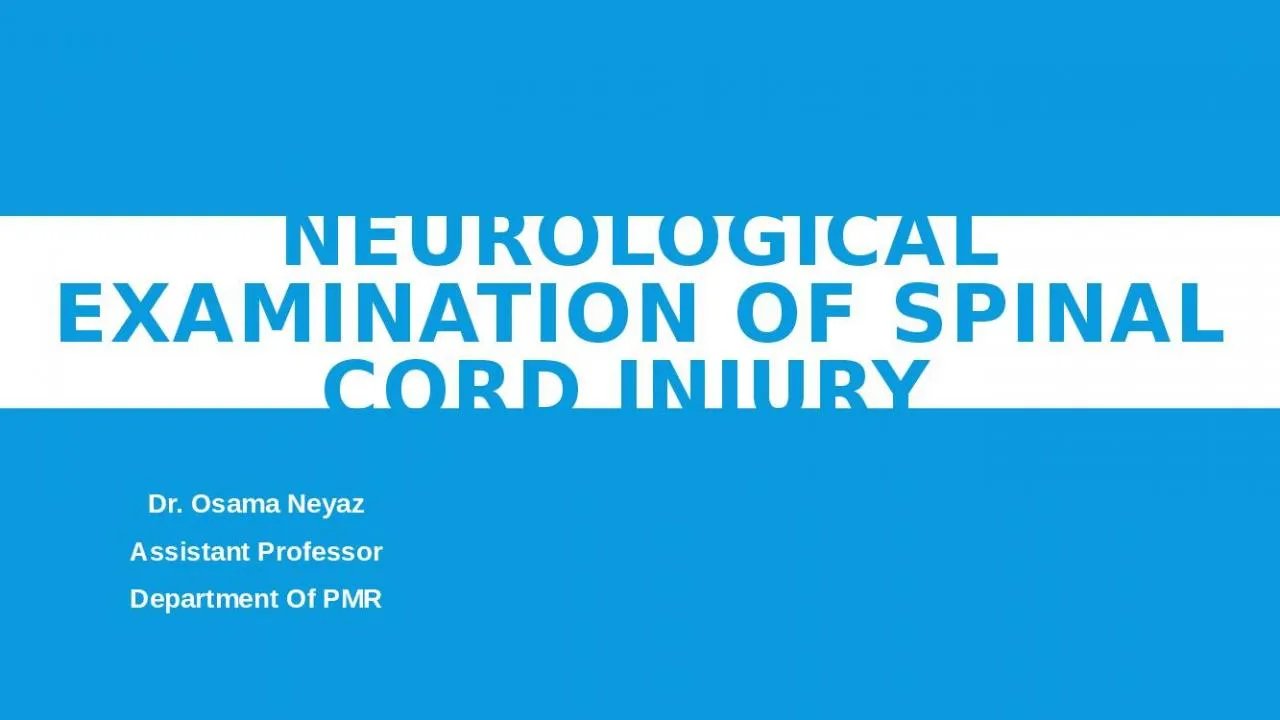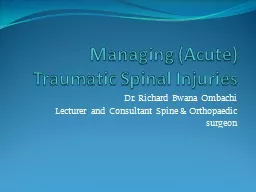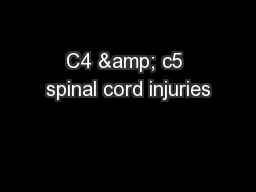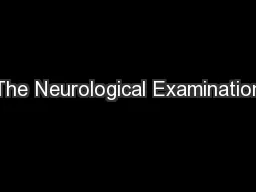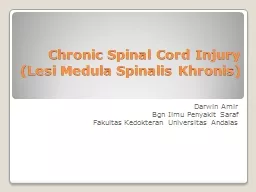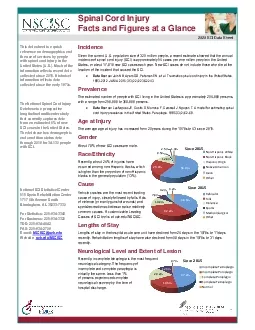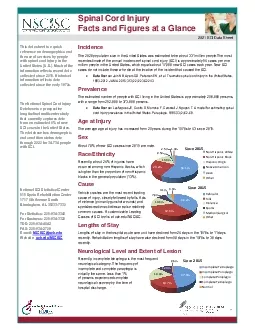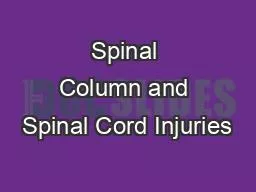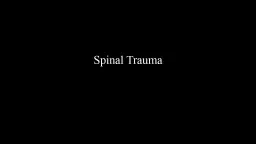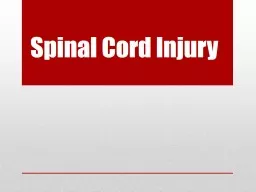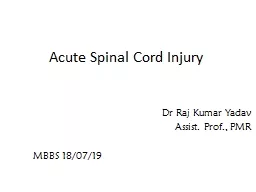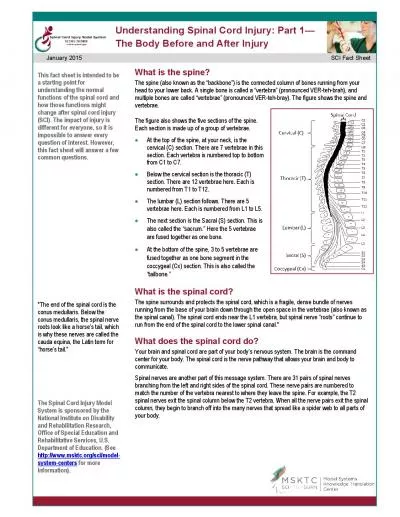PPT-Neurological Examination of Spinal Cord injury
Author : tabitha | Published Date : 2022-04-06
Dr Osama Neyaz Assistant Professor Department Of PMR Anatomy of spine 7 cervical vertebrae 12 thoracic vertebrae 5 lumbar vertebrae 5 fused sacral vertebrae
Presentation Embed Code
Download Presentation
Download Presentation The PPT/PDF document "Neurological Examination of Spinal Cord ..." is the property of its rightful owner. Permission is granted to download and print the materials on this website for personal, non-commercial use only, and to display it on your personal computer provided you do not modify the materials and that you retain all copyright notices contained in the materials. By downloading content from our website, you accept the terms of this agreement.
Neurological Examination of Spinal Cord injury: Transcript
Download Rules Of Document
"Neurological Examination of Spinal Cord injury"The content belongs to its owner. You may download and print it for personal use, without modification, and keep all copyright notices. By downloading, you agree to these terms.
Related Documents

